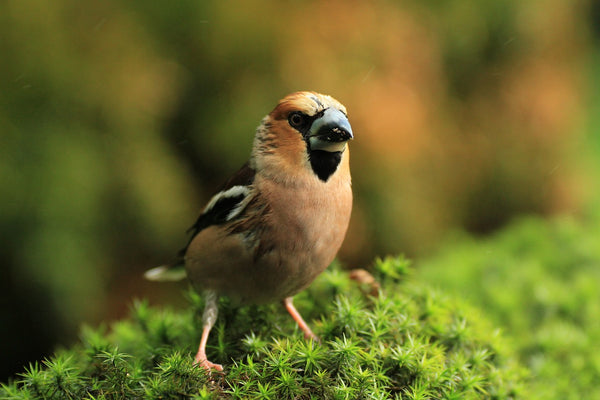
Hawfinch: Identification, Habitat, and Feeding Guide
Share
The Hawfinch (Coccothraustes coccothraustes) is a passerine bird and is part of the finch family (Fringillidae).
The Hawfinch (Coccothraustes coccothraustes) is a passerine bird and is part of the finch family (Fringillidae). The upper parts of its body are dark brown, and its underparts are orange. Its head is orange-brown with a black eye-stripe and bib, and it also has a relatively large, robust bill. Its appears short-tailed, yet its wing bars and tail tip look striking in flight.
They are a seemingly timid and secretive bird with a quiet song that makes a muffled sound, often described as robin-like "tic tic".
The Hawfinch is the UK's largest finch, and while they can be spotted all year round, they can be a tough bird to observe. The places they most inhabit are mixed woodland, orchards and parks with towering trees. Outside of the breeding season, they can be seen more quickly, especially when the trees are without leaves.
They feed regularly on the ground and mainly on seeds from hornbeam and beech trees; they will also take them directly from the tree itself. The Hawfinch will, however, consume a variety of seeds from other plants such as oak buds. During the summer, it forages freely for insects. Due to its rather large bill, it can break open thick stones such as cherry and olive.
When it comes to providing supplementary bird food for the Hawfinch, try peanuts as they're amongst the simplest and most beneficial ways to feed the birds as they are high in calories and oils, and supply many species. During autumn and winter, peanuts can be fed from a mesh feeder, bird table or even a ground feeder; however, it's best to stick to a peanut feeder only during spring and summer.
Also, suet balls are an excellent bird food - try Haith's Suet Puds as they contain lashings of superior quality British Suet, which means they're softer and more palatable. They're also higher in fat content and are just what the bird's need during autumn and winter. Feed fat balls from an easy to hang feeder for example on a tree branch, and can be very entertaining to watch as they are continually flying on and off the feeder.

Written by Tina Jakes
